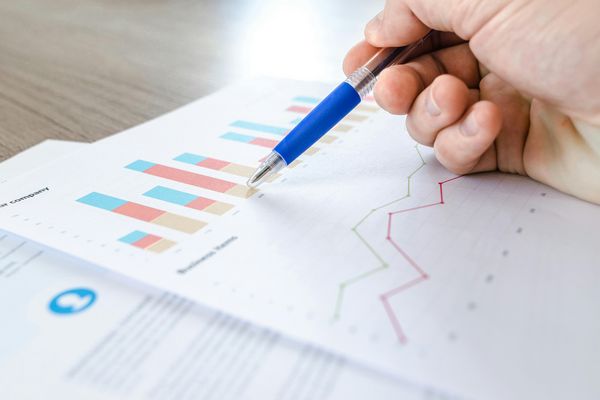IoT Data Analytics Platforms: Transforming Business Through Smart Data Insights

IoT Data Analytics Platforms: Transforming Business Through Smart Data Insights
In today’s hyperconnected world, IoT data analytics platforms are revolutionizing how businesses operate, make decisions, and drive growth. These sophisticated technological systems process vast amounts of data from interconnected IoT devices, converting raw information into actionable business insights that enhance decision-making and operational efficiency.
Estimated Reading Time: 8 minutes
Key Takeaways
- Understanding IoT data analytics platforms as comprehensive solutions for data management and analysis.
- The importance of real-time IoT data visualization in enhancing operational monitoring.
- Leveraging predictive analytics for predictive maintenance and trend forecasting in IoT ventures.
- The role of IoT business intelligence tools in driving strategic decision-making.
- Exploring the future and emerging trends in IoT analytics.
- Understanding IoT Data Analytics Platforms
- The Power of Real-time IoT Data Visualization
- Predictive Analytics for IoT: The Future of Business Intelligence
- IoT Business Intelligence Tools: Driving Smart Decisions
- Data-driven Decision Making with IoT
- Choosing the Right IoT Data Analytics Platform
- Future Trends in IoT Analytics
- Australian Market Impact and Changes
- Conclusion
- Real-time data collection and storage
- Advanced data processing capabilities
- Predictive analytics engines
- Interactive visualization dashboards
- Scalable cloud infrastructure
- Grafana: Perfect for time-series data analysis
- Tableau: Excellent for interactive business intelligence
- Power BI: Robust enterprise-level analytics
- Monitor equipment performance in real-time
- Track supply chain movements
- Analyze customer behavior patterns
- Identify potential issues before they escalate
- Equipment maintenance scheduling
- Inventory optimization
- Customer behavior prediction
- Resource utilization forecasting
- Manufacturing: 30% reduction in maintenance costs
- Healthcare: Improved patient outcomes through early intervention
- Retail: Enhanced inventory management and reduced stockouts
- Data integration from multiple sources
- Advanced analytical processing
- Customizable reporting
- Real-time monitoring
- Predictive modeling
- Aligning analytics with business objectives
- Building robust data management infrastructure
- Ensuring data quality and accuracy
- Training staff in data interpretation
- Regular system optimization
- Scalability capabilities
- Integration possibilities
- Security features
- Cost-effectiveness
- Technical support
- Ease of use
- AWS IoT Analytics
- Microsoft Azure IoT
- Google Cloud IoT
- IBM Watson IoT
- Edge computing for faster processing
- AI-powered analytics
- 5G enabling real-time analytics
- Blockchain for secure data handling
- Extended reality (XR) for data visualization
- Investment in smart city initiatives across major metropolitan areas
- Agricultural sector adoption for precision farming
- Mining industry implementation for safety and efficiency
- Healthcare sector integration for improved patient care
- New data privacy regulations affecting IoT analytics
- Government initiatives supporting IoT adoption
- Industry-specific standards development
- Increased focus on cybersecurity measures
- Assessing your current data infrastructure
- Identifying key business objectives
- Evaluating suitable platforms
- Planning a phased implementation
- Consulting with IoT analytics experts
Table of Contents
Understanding IoT Data Analytics Platforms
At their core, IoT data analytics platforms are comprehensive software solutions designed to handle the complex task of collecting, storing, processing, and analyzing data from connected devices. These platforms serve as the bridge between raw data and meaningful business intelligence.
Key Features Include:
Discover more about these features here.
The Power of Real-time IoT Data Visualization
Real-time visualization transforms how organizations monitor and respond to their operations. By providing immediate insights through dynamic dashboards, businesses can make split-second decisions based on current conditions.
Popular visualization tools include:
These tools enable organizations to:
Learn about the solutions for real-time data visualization in IoT here.
Predictive Analytics for IoT: The Future of Business Intelligence
Predictive analytics represents the next frontier in IoT data utilization. By combining historical data with machine learning algorithms, businesses can forecast trends and prevent issues before they occur.
Key Applications:
Success Stories:
For a deeper dive into IoT predictive analytics, check out this guide.
IoT Business Intelligence Tools: Driving Smart Decisions
Modern IoT business intelligence tools provide comprehensive insights by integrating multiple data sources and applying advanced analytics. These tools transform raw data into actionable intelligence that drives business growth.
Essential Capabilities:
Explore more on IoT business intelligence platforms here.
Data-driven Decision Making with IoT
Successful implementation of IoT analytics requires a strategic approach focused on:
Stable connectivity is critical for success. For instance, industrial routers such as the Teltonika RUTX09 Industrial or Vehicle Gateway Router and the Teltonika RUT241 Compact Industrial Router ensure reliable communications. Check out best practices for IoT data analytics here.
Choosing the Right IoT Data Analytics Platform
Selection Criteria:
Leading Platforms:
For a detailed platform analysis, see this resource.
Future Trends in IoT Analytics
The future of IoT analytics is shaped by emerging technologies and evolving business needs:
Explore these trends here.
Australian Market Impact and Changes
In Australia, IoT data analytics platforms are gaining significant traction across various sectors. The Australian government’s “Digital Economy Strategy 2030” has positioned IoT as a key driver of digital transformation.
Recent Developments:
Upcoming Changes:
The Australian market is particularly focused on remote monitoring solutions, integration with existing infrastructure, and supporting rural and remote communities.
Conclusion
IoT data analytics platforms represent a transformative force in modern business operations. Their ability to convert vast amounts of data into actionable insights makes them indispensable for organizations striving to maintain competitive advantage in today’s digital economy.
Call to Action
Ready to transform your business with IoT analytics? Start by:
Share your IoT analytics journey in the comments below or reach out for more information about implementing these solutions in your organization.